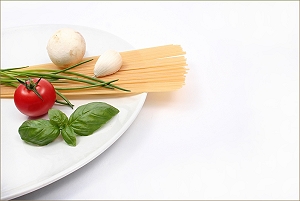 Researchers believe that fire has been in use for about 500,000 years. Heating food offers many advantages, but also some disadvantages. It all depends, like many things in life, on finding an ideal middle way.
Researchers believe that fire has been in use for about 500,000 years. Heating food offers many advantages, but also some disadvantages. It all depends, like many things in life, on finding an ideal middle way.
At high temperatures, new compounds in food arise. Heating potatoes alone produces about 450 new substances, sometimes also problematic substances. Recently there has been a lot of talk in the media about acrylamide, a carcinogenic and mutagenic substance. It arises in the browning process, i.e. during deep-frying, baking, frying, roasting and grilling of potatoes and cereal products. Acrylamide can occur in french-fries, potato chips, potato pancakes and in toast. Acrylamides do not only arise in processed potatoes, but generally when heating starchy food. Pancakes, croquettes and gratins develop only small amounts of Acrylamide due to their high content of water.
Quinolines however, arise through heating proteins. They are also highly carcinogenic substances and are found mainly in animal food.
During fumigation and grilling, hazardous polycyclic aromatic hydrocarbons (PAHs) occur.
What should you consider when processing food? All substances mentioned above have one thing in common: The higher the temperature during cooking, the more harmful substances are produced. Also, the amount of harmful substances increases with temperature. Therefore, it is preferable to cook food a little longer and at lower temperatures. No foods should be fried too dark, and for barbecuing you should use grill foil.
Why do we heat our food?
The answer to this question is very simple: foods have a longer shelf life after any form of preparation. The ability to make food stable was certainly an important survival measure in difficult times.
But in the process of grilling, roasting, baking and cooking, harmful substances arise. And not only that: at temperatures above 150 ° carbohydrates and proteins are baked together and produce novel structures, called melanoidins. These substances become visible e.g. as bread crust. Melanoidins are attractive to our sense of taste. In roasted coffee beans for example, 1000 different such flavorings can be found. Fried, grilled and roasted food therefore has always seduced the taste buds of people. The production of such flavorings by appropriate preparation is the art of a good chef.
However, there is a peculiarity: Dr. Virchow has described an, until today, unknown phenomenon in medicine with the concept of digestive leucocytosis. Heated food increasingly produces defense cells in the blood and in quantities that only happen in connection with infections. In 1927, the Russian scientist Kouchakoff could prove that this defense reaction of the immune system occurs only when the food is cooked – not with raw food. The higher the cooking temperature, the more severe was the reaction. Some refer to this as the "the normal madness of civilizational eating habits". This phenomenon can probably be explained by a lack of enzymes in cooked food. Immune cells are needed to break down the food into usable components. This "envolvement", however, leads to a weakening of the immune system, which is needed in the defense against viruses, bacteria and cancer.
The benefits of raw foods are thus obvious:
- No toxic substances (Acrylamides, PAHs, quinolines)
- enzymes (keyword digestive leucocytosis)
- The abundance of vitamins and trace elements
But there are also disadvantages of raw foods:
- fewer or no flavors
- fruit acids damage the teeth
- dietary fiber (cellulose) can cause increased flatulence.
- lower shelf life (the food spoils more quickly)
- parasites (e.g. fox tapeworm) are killed only by heating.


